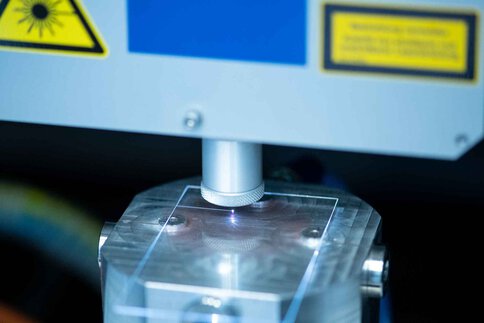What are ultrashort pulse lasers—and what are their advantages?
Ultrashort pulse (USP) lasers have a pulse width in the pico or femtosecond range. The following classification makes it easier to understand the dimension: Light takes about 1.2 seconds to reach the moon from Earth. In a picosecond (1 ps = 1 trillionth of a second) light travels 0.3 mm and in a femtosecond (fs = 1 quadrillionth of a second) just 0.3 µm.
Short laser pulses like this have enormous benefits in material processing, medical applications, and research.
- The ultrashort intensive light beam selectively evaporates material that it comes into contact with, which results in extremely precise structures and cut edges
- USP processing minimizes the temperature load in the direct surroundings. This allows processing of µm-thin and heat-sensitive materials
- In many cases, surface structuring with USP lasers replaces coatings
- Transparent materials also absorb the high-intensity light pulse
- The precision of surgical procedures, such as on the eye, is increasing and reduces the risk of complications. To remove tattoos, USP lasers pulverize the ink particles in the skin, causing minimum damage to the surrounding tissue
- In science and metrology, USP lasers enable ultrafast processes to be observed, recorded, and influenced—with ultrafast spectroscopy, multiphoton microscopy, or optical coherence tomography

